By Lucy Cormack
The tallest of Hong Kong Island’s three Tregunter Towers stretches more than 219 metres into the sky – a front-row seat for viewing the city’s verdant Victoria Peak and the sea of high-rise buildings below.
For thrill seeking urban climber Remi Lucidi, it was a view to be seen first hand, but also one that would ultimately cost him his life.
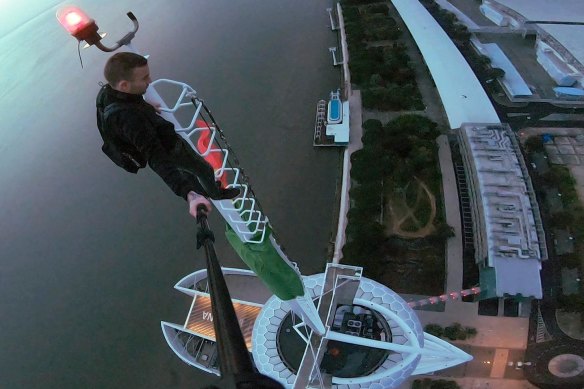
French daredevil Remi Lucidi had a history of climbing structures around the world.Credit: Instagram
The 30-year-old French photographer plunged 68 floors to his death last week in a suspected extreme climbing escapade gone horribly wrong.
An avid photographer and scaler of high-rise buildings and bridges – a pastime also known as “rooftopping” or urban exploring – Lucidi fell from the exterior of a Tregunter Tower penthouse in Hong Kong’s affluent Mid-Levels neighbourhood on July 27.
Local media reports said Lucidi entered the building on the ground level about 7.30pm, telling a security guard he was visiting a friend. CCTV reportedly showed he took the elevator to the 49th floor, before taking stairs to level 68 and opening a door to the rooftop.
It is not known how long he spent on the building’s exterior before Lucidi met difficulty, however the South China Morning Post reported that a cleaner saw the man knocking on a penthouse window from the outside, suggesting he may have been trapped and asking for help.
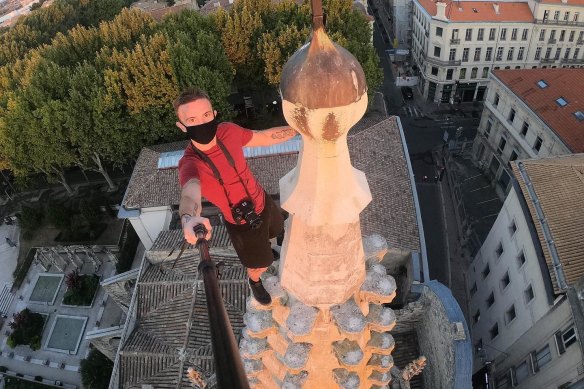
Lucidi described himself as a photographer based in Hong Kong.Credit: Instagram
When police arrived they found his body at the base of the building, along with his camera containing footage of extreme climbing.
The underground rooftopping/urban exploring scene has grown in popularity and ventured into the mainstream with the rise of social media platforms like Instagram and TikTok. The apps have given an audience to these risk-takers who feed fans hair-raising footage and selfies from death defying heights usually reached by illegal means.
“It’s certainly something that sort of celebrates its illegality, it kind of revels in it,” said Goldsmiths University of London criminologist Theo Kindynis.
He studied the subculture as part of his PhD in 2016, examining the attractions of the behaviour, why people engaged in it and how it differed from other subcultures like graffiti writing.
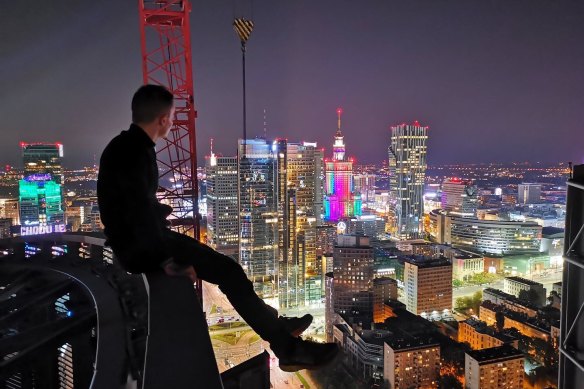
Lucidi pictured atop a building in Warsaw, Poland.Credit: Instagram
Kindynis said he had observed groups that accessed locations like tube stations illegally, but did not post images online because of the legal risks involved and the element of secrecy and competition.
However, his research also highlighted a growing scene of young men travelling the world, who are largely motivated by cultivating a social media following.
“The sad thing is, there’s now so many of these guys, there is a whole genre of photography ... I can’t tell the difference between this guy’s photographs and dozens if not hundreds of other people’s Instagram accounts,” he said.
“I would love for it to be a kind of progressive, liberal politicised practice. But you go and talk to these guys, most of them will just say, I love breaking into buildings and dangling off rooftops.”
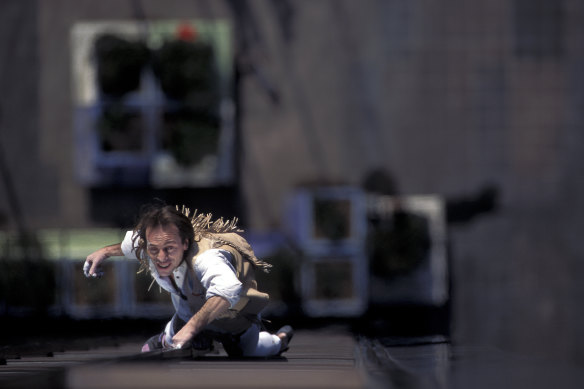
Alain Robert is a French urban climber and rock climber who has been climbing for 50 years.
Kindynis added that the subculture took off about 10 years ago, at a time when it was easier to access skyscrapers and towers under construction. A product of the growing popularity of YouTubers and Instagrammers has been a crackdown by developers in global cities, with increased security and a willingness to take legal action against would-be explorers on their sites, he said.
Instagram and TikTok are saturated with images of rooftoppers hanging from balustrades or danging their feet over the side of sky-rise buildings in cities like Hong Kong, New York and Dubai, linked to hashtags like #urbanclimbing #citygrammers #urbanexploration and #chasing_rooftops.
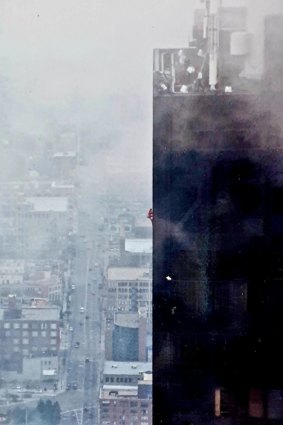
“You need to be strong, physically, but most of all, you need to be strong mentally,” climber Alain Robert said.
While many images simply promote thrill-seeking heights, other viral examples have been used to promote political messaging, like pseudonymous climber Mustang Wanted who in 2014 scaled one of Moscow’s Stalin-era Seven Sisters skyscrapers, repainting it blue and yellow and topping it with a Ukrainian flag.
French rock and urban climber Alain Robert, who has been climbing for 50 years, said it was tragic to see the death of young “rooftoppers” like Lucidi, suggesting aficionados of the subculture are not often trained climbers but social media photographers.
“They are not climbing the side of a building, they are taking a lift, using fire exit, and they take selfies and GoPros. It has nothing to do with climbing ... there is now a lot of people who are not trained for that,” he said.
Robert, who goes by the moniker French Spiderman, said his own career had involved plenty of illegal climbs, but others that were approved, like his 2011 scale of Dubai’s Burj Khalifa – the world’s tallest building.
He said he received the green light from authorities to climb the Burj Khalifa; however, he was required to wear a harness. The 828-metre climb took six hours, including the tapered spire.
Robert added that he understood the lure of rooftop heights for urban explorers but lamented the influence of social media.
“When I started to climb, I was climbing completely all alone. Most of the time, there was no picture, there was no film,” he said.
“So, the question is whether all the new generation are doing something because they really love it or because they want to become famous?”
Get a note directly from our foreign correspondents on what’s making headlines around the world. Sign up for the weekly What in the World newsletter here.